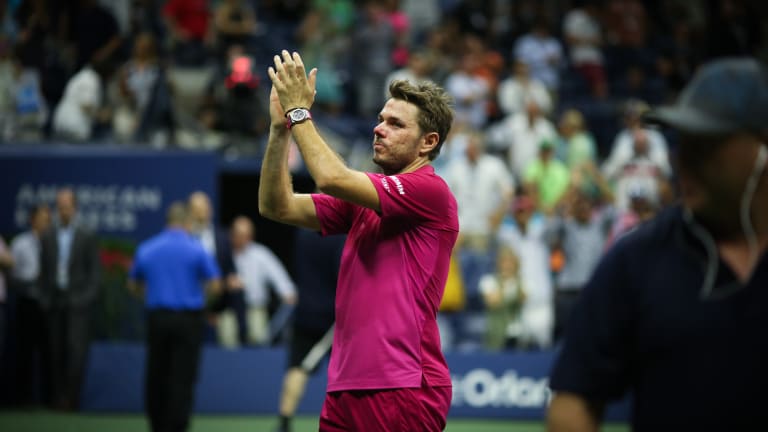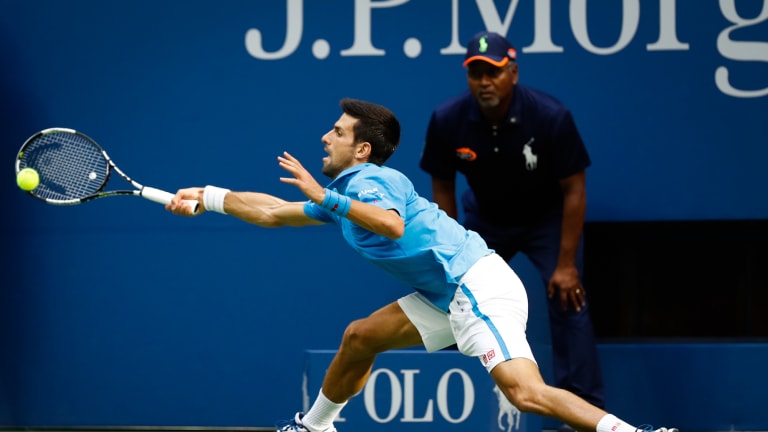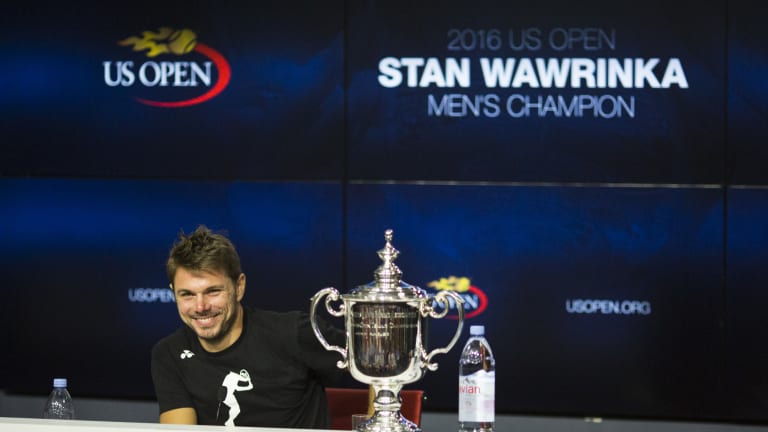NEW YORK—“I don’t know what’s happening right now.”
These were Stan Wawrinka’s first words to the audience in Arthur Ashe Stadium after his 6-7 (1), 6-4, 7-5, 6-3 win over Novak Djokovic for the U.S. Open title on Sunday night.
On the one hand, you could forgive Wawrinka’s bewilderment. The 31-year-old was making his 12th trip to Flushing Meadows, and this was the first time he had reached the final, let alone won it. And in Djokovic, he had just beaten an opponent who had won 19 of their previous 23 matches.
On the other hand, Wawrinka also knew exactly what was happening, because he had been in exactly this situation two times before. It was the third time he had played a major final against a No. 1-ranked opponent, and it was the third time he had walked away with the champion’s trophy. After his wins over Rafael Nadal in the 2014 Australian Open final, Djokovic in the 2015 French Open final and Djokovic again on Sunday, Wawrinka and the rest of us really can’t act surprised by anything he does anymore.
We also can’t say that he’s just a hot-and-cold, hit-and-miss slugger anymore. Wawrinka certainly did his share of slugging in this match; he hit 46 winners in 44 games, and drew more than his usual share of oohs and aahs from the capacity crowd when he unsheathed his down-the-line backhand. The new roof over Ashe made that shot resound even more forcefully than it has here in the past.



